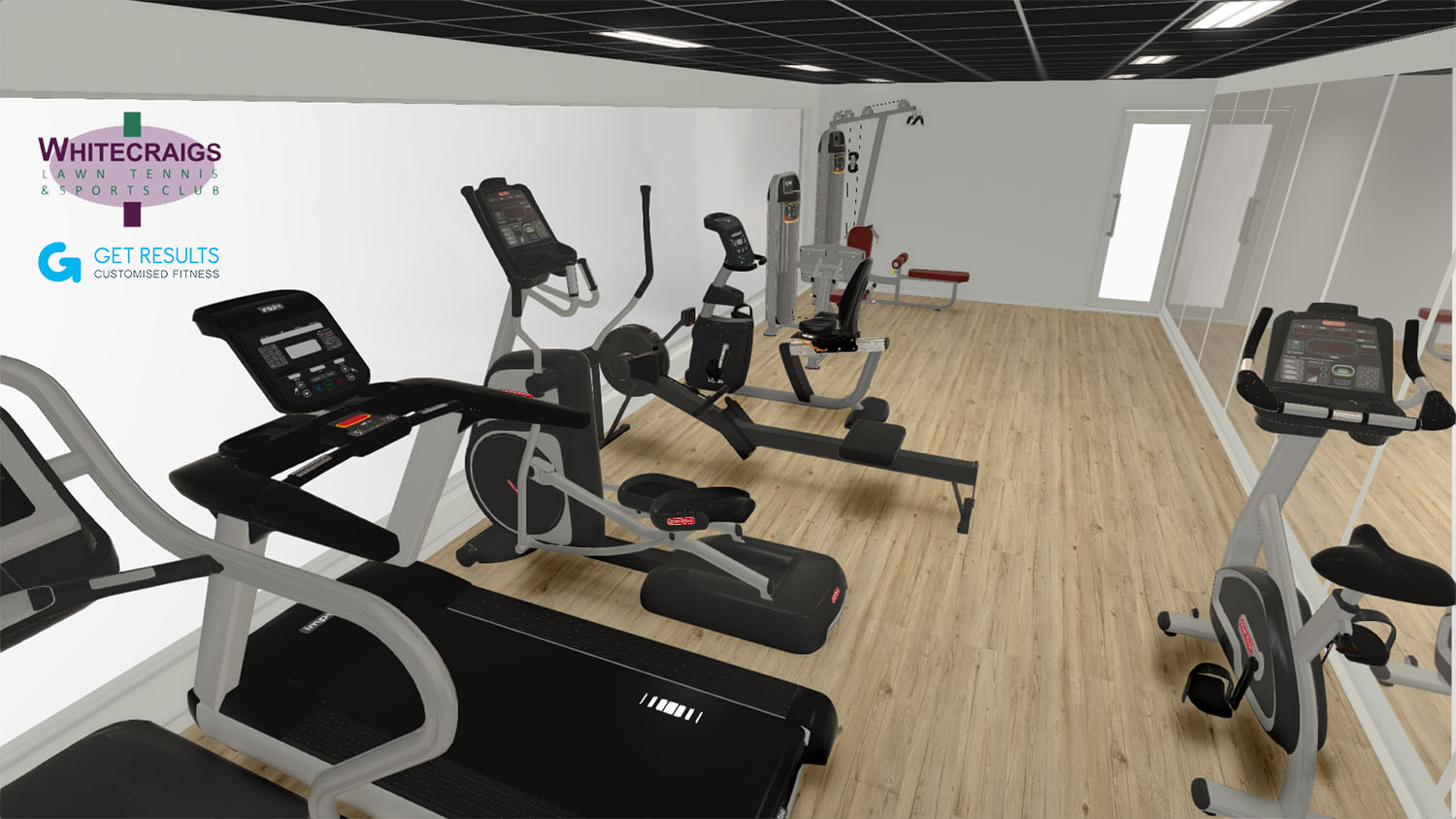
The launch of new gym at Whitecraigs Tennis Club has led to us meeting more people at the start of their fitness journey or people returning to fitness after a lengthy break. Our aim with the new gym and the Get Results program in general is to make the early part of a fitness journey a positive one and to create an environment where people who may lack confidence at the gym, feel that they can come and be welcomed and know that they belong in that environment. This got me thinking that we should put together a checklist for those starting or re igniting their fitness journey!
1. Change Mindset
For many people who want to get fit and or to lose weight, a change of mindset is often needed to achieve change. If you’re stuck in a mindset of telling yourself that you’re overweight, or lazy and unfit, you’ve convinced yourself that you’ll never stick to a routine or that you simply can’t do it, the chances are you will prove yourself to be right. To overcome this, it’s important that you start to see yourself as a fit and healthy person, and that you start to believe that, with some endeavour and perseverance, you can achieve great things with your health and fitness. Our mantra for clients is ‘what you focus on is what you get’, so, try and move away from the negative self-talk and put some faith in yourself that you can make some positive changes.
Also, to change your negative mindset try to stop viewing exercise and making healthier life choices as being a negative or a hard thing. Working out should be reasonably enjoyable and making lifestyle changes doesn’t have to be a complete grind. We try and reframe it as something you can do for yourself, something that gives you so much more energy and makes you feel so much better. Don’t think of it as being like those horrible days in PE or the struggles you have had on a restrictive diet as it really does not have to be like that.
2. Get Some momentum Going
During my days in gym management, it was drilled into us that members who attend 4 times in the first 4 weeks have a higher chance of still being a member in 6 months’ time. So, we try to get some momentum in the first four weeks with our clients advising them to get 1-2 structured workouts per week in the first month of their fitness journey (ideally booking sessions in their diaries as appointments). Too many people set themselves up for failure by aiming for 4-6 workouts per week straight away and predictably, for any number of reasons, they don’t achieve it, leaving them with negative feelings about the whole effort. If you say you are going to do 1-2 per week and you get 8 sessions in the first month that would be a major success; however if you aim for 4- 6 sessions per week and end up with the same 8 sessions over the month, you’ll likely be disappointed with your efforts.
Success breeds success, so start with a few commitments that you are confident you can achieve. Then you can grow in confidence and build on these
3. Don’t Kill Yourself
One of the barriers to exercise can often be the belief that to get results you are going to have to push through pain and work to levels of discomfort that you are just not ready to deal with. The reality is that if you have not done exercise before or have had a lengthy gap from working out, it will take very little for you to get the required amount of exposure to exercise stress your body needs to develop. Doing 4-6 big movements in a workout is likely to be enough. Research suggests that if you hit it too hard at the start, you will not stick with these new habits, not to mention that you are much more likely to get injured and, consequently lose the much-needed momentum which is key in adopting healthier lifestyle changes. By the way, this is where I do get angry at so many other trainers and programs who know only know how to smash people and don’t allow for a progressive approach to exercise.
4. Take a birds eye view of your plan
If you do manage to get to the gym twice per week, it is important to take note of the fact that those 1 ½ – 2 hours only account for 1.2% of the 168 hours available in your week. So, it would be imprudent to think that this is going to be the magic bullet that suddenly makes you fit, lean and strong again. Alongside your gym habits aim to be as active as possible each day; eat a diet that keeps you in a healthy weight range, make sure you get a good sleep pattern and manage your levels of stress. All these factors are part of the jigsaw if you want to truly adopt a healthier lifestyle.
5. Get Confident
One of the key contributors to adhering to an exercise plan is feeling confident in what you are doing. Don’t go for the fancy YouTube videos or extreme workouts that you may lack confidence in doing. As mentioned above if you get good at the big movements (squats, pressing, pulling, lifting and a form of rotation) and do them quite often at the start so as you become competent at them you are much more likely to stick with it. A mistake I see way to often is trainers showing new clients 10-20 exercises in an induction which leave the person left feeling confused and overwhelmed. The chances of them coming back on their own is greatly reduced right there, and if they do pluck up the courage to come back they are likely to stick to the exercises that they are confident in using such as the bike or treadmill which is likely not to be the most effective use of their time.
6. Keep It Fresh
As much as we have spoken about sticking to 4-6 big movements and getting good at them, it is also worth noting that boredom and stagnation are often key reasons for people dropping off from exercise and healthy living
7. Track Your Progress
Too often we can be our own worse critics and Scots aren’t typically good at celebrating our successes. If most American’s manage, say, to get those 8 workouts in on the first month they would likely be getting high fives from their buddies in work for sticking with it and “doing AWESOME”, whereas in our country we are more likely to walk into a response of “oh your still managing this gym thing, how long do you think that will last …”
So, by tracking your progress (and that could be the number of sessions completed, weights lifted, steps completed, calories consumed) you can then reflect on your progress and acknowledge the things you have achieved and then hopefully give yourself a pat on the back for them. All of which will help keep you motivated and moving forward and will also contribute to the change of mindset needed, as every time you prove your sub conscious beliefs about yourself as being wrong, you reduce the strength of these beliefs and over time they will change, until you become that person who believes in themselves and views themselves as being a fit and healthy person. Which, by the way, has been shown as being one of the common beliefs held in someone who adheres to an exercise program.
I would love to hear your thoughts on your start to your fitness journey the good the bad and the ugly (On reflection I can’t quite believe that it wasy 20 years ago now that I started my fitness journey, when I transitioned from being a chunky goalkeeper into going to the gym and running and learning to love exercise!)
Paul


